Unlocking Global Markets: A Guide to Localizing Game Characters
How do you tailor game characters to different cultures? Explore the ingredients of flawless game localization to speak your players’ language.
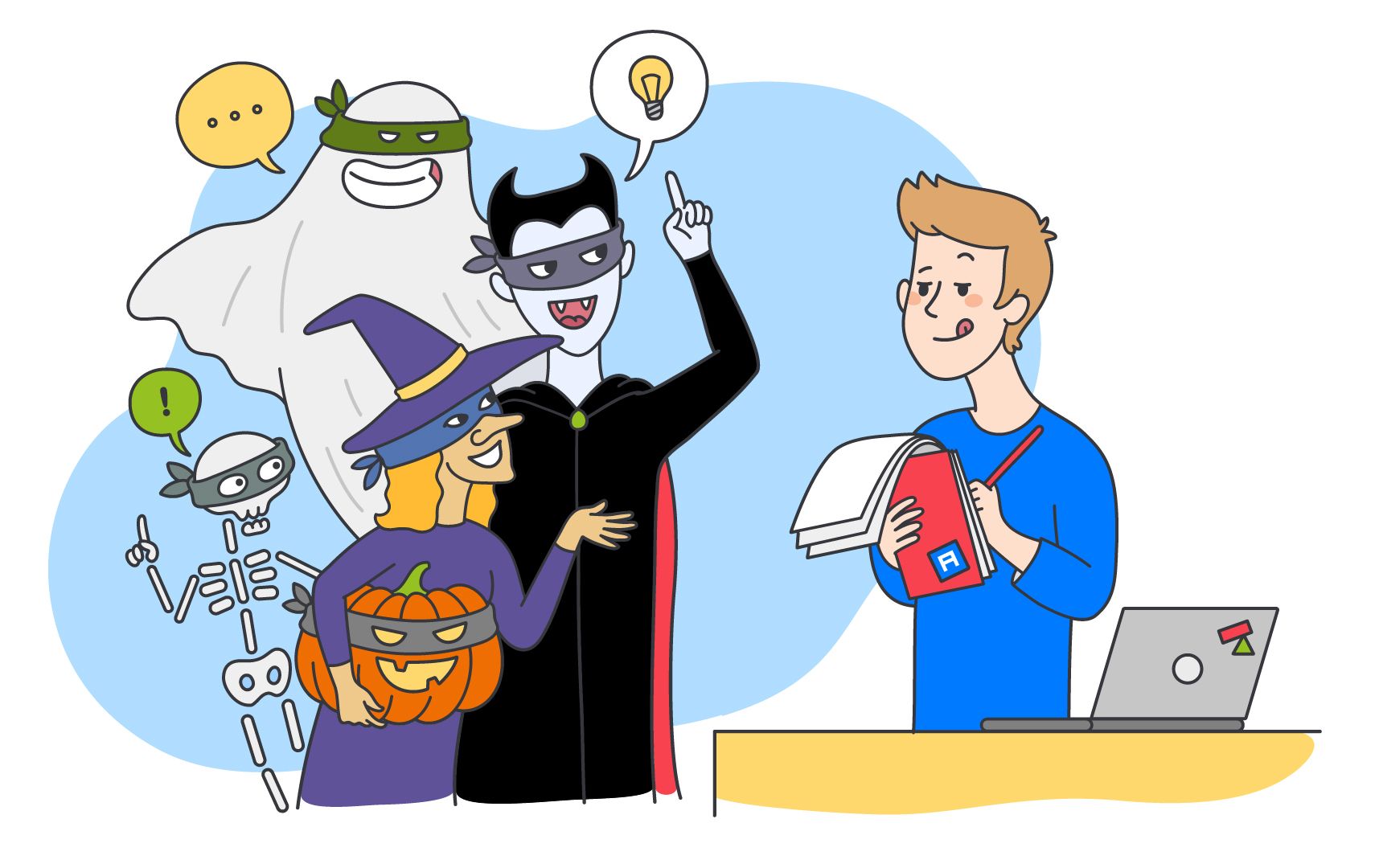
Some games are so simple that interface localization alone is nearly enough to launch them globally and start printing money. With other games, however, developers can’t get off so easily. You may need to do far more than translate buttons and items when your game features characters. How does the game localization process go when there are dozens of characters with their unique tone of voice, intentions, role in the game, etc...? Alconost, a game localization services provider with 18 years of experience, shares its opinion here.
First and foremost, let’s see how characters express themselves in games.
- Names
- Dialogues: written phrases, strings
- Voice narration, if any
- Look: facial features, clothes, other attributes
- Actions: gestures, behavior, interaction with other characters and the player.
Your game does not necessarily need to have all this. But the more you’ve invested in plot development and narrative design, the greater the chance that when preparing to go global, you’ll have to take these layers into account at the localization stage.
Beyond the Surface: The Complexities of Name and Dialogue Localization
Let’s start with the simplest: character names. Take, for example, a name such as Alexander. It’s evidently a masculine given name, and this simple fact communicates an important piece of information to the translators. But if it were in the shortened form, Alex, the gender identity wouldn’t be that obvious, and this would give rise to questions—or to a translation blunder. The same occurs when the character has a made-up name that doesn’t give any clues about gender.
Or, imagine that your character is an animal. The trick here is that in English, animals are usually referred to as ‘it,’ which is genderless. But for a proper localization of this character into certain languages, for example Spanish, Italian, or German, the issue of the animal's gender will come up.
The thing is that the English language doesn’t have gender-specific endings. In many other languages, when the character speaks or is being referred to in a dialogue, its gender might need to be expressed. That is, in certain languages, some adjectives or even verbs inherit gender, just like the pronoun ‘she’ in English indicates that the character is female. Yes, you got it right: even if your characters were designed as ‘genderless’ initially, and the source language of your game is English, these characters will have to obtain a gender in certain localizations!
The good news here is that when you work with a localization team, you don’t need to delve into intricacies of this kind. The team naturally knows how to localize the names and dialogue lines into their native language without making linguistic errors. The only thing you need to be aware of is that you might be asked about characters’ gender and maybe some other features that are not evident, such as if the character is a child or an adult.
Strategies for Translating Names and Dialogues
Character names can reference books, movies, historical events, or culture in general. To maintain these references in localization, you might need more than simple transliteration, and that’s why some names in localization may look far from the original.
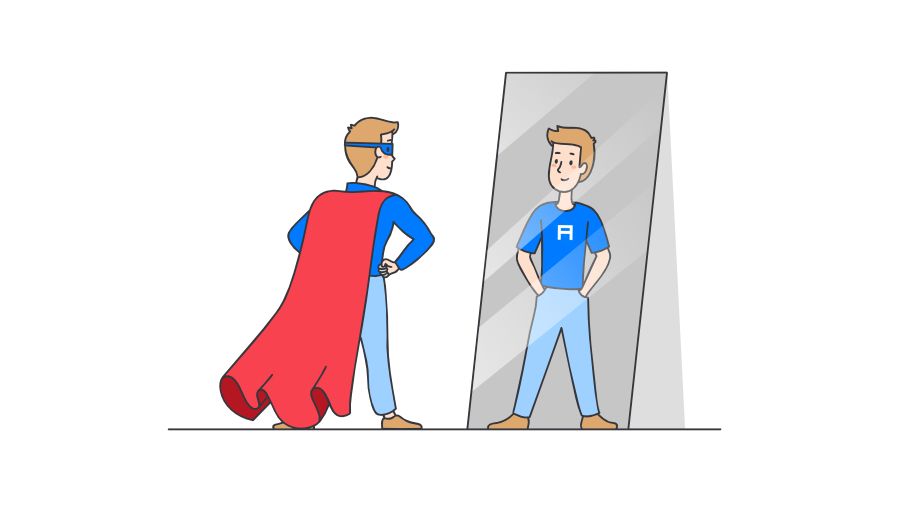
It might be that the same characters are known by different, specific names in the target market. With the aid of native speakers, you’ll be able to select the right names to keep the allusion visible. Take, for example, Humpty Dumpty from ‘Alice in Wonderland.’ The book is well-known in many countries, but to keep the reference evident, you need to know what Humpty Dumpty was called in the book’s most popular translation into a specific language!
If the names are self-explanatory and refer to the character’s personal features without external cultural references, consider allowing a creative approach for choosing equally self-explanatory names for each localization. The same approach won’t hurt if the names were unique wordplay-based inventions by your team.
Other solutions are either to sacrifice the implied meanings to keep everything simple for the players, or to supplement your game with a knowledge base where all allusions are explained clearly.
So, now you’re aware of some underwater streams that may lead to a non-obvious and non-literal way of localizing specific names. And again, when a localization team takes care of your game’s new language version, you can relax and simply answer questions if they’re asked.
Boosting Efficiency with Localization Tools
Before we list two significant tools that help with quality-first localization, let’s state quite an obvious thing: the more context the translators see, the more accurate and natural the localization will be. When preparing a file where all localizable lines are put together, consider adding screenshots of your characters in conjunction with strings that contain the respective names and briefly describing their key features. This way, some questions simply disappear even before they’re asked, and the localization process will go swiftly.
Glossary
Technically, a glossary is a small database of the terms used in the game repeatedly. It helps ensure that objects, locations, and functions are named the same way throughout the game.
The characters' names should also be glossary items. If a game update brings new characters into play, their names should be added to the glossary too. The glossary can also contain instructions on how to deal with a specific name. That way, every time the name appears in a string, it’ll always be handled as intended.
When you order localization for the very first time, you may not have a glossary, but that doesn’t mean that you have to be the one who creates it. Your localization team can do this for you.
A quick case study: To localize Days After, a mobile game developed by Reaction Games, into eight languages, including Korean and Traditional Chinese, we suggested creating a glossary and keeping the same team of linguists for this project. Since then, our linguists have been expanding the glossary with each new update.
Translation Memory
Another tool that can help maintain consistency is translation memory. It’s a feature that localization platforms, such as Crowdin, have by default. Translation memory scans the previously translated strings in the localization project and shows how a specific line has been translated before, if at all.
The translation memory also helps if you have characters with specific speaking styles; for example, some have a rustic vocabulary, while others use a high-flown language. The translation memory shows how repetitive vocabulary items were localized previously, so that translators can refer to the existing translation of repeated words and translate them the same way — or at least with the same spirit, depending on the context.
The bundle of the glossary and translation memory works wonders to keep the characters’ phrases unique & consistent at the same time. It also accelerates the tempo of localization, enabling developers to roll out localized updates as soon as possible.
A quick case study: EdkonGames localizes three games with us: Modern Ops, Fire Strike, and WW II: Battle Combat. Each game has its own terminology, which needs to be preserved in the translation. A glossary and translation memory accelerate the work and make localization for each language uniform. On top of that, there’s a permanent team of translators who work on localizing these games; their immersion in game contexts helps them to translate in the proper style and as quickly as possible.
From Good to Great: The 3 Pillars of Excellence in Game Localization
Communication
Solid communications between a developer and a localization team representative helps localizers avoid blunders and deliver a high-quality product as quickly as possible.
If you’re a developer who has been asked to fill out a localization brief, you might consider it a time-wasting formality. But try to look at it from a different angle. The questions in the brief can help you hone your requirements and articulate expectations, as well as give the localization team a better understanding of your game.
Remember that you can benefit from your localization team’s expertise. If you're facing game translation for the first time in your career and simply don’t know all the possible pitfalls, there’s nothing to be embarrassed about. If you work with a professional team that has localized dozens of games, they’ll have you covered. They’ll ask you the right questions and point out the nuances that require closer attention during the localization process.
A quick case study: The chief nuance in localizing Next Epic’s The Hotel Project: Merge into Brazilian Portuguese had to do with the names of the characters, objects, and locations. We coordinated with the client on the guiding principles for handling names and titles in translation. Then we compiled a glossary that helped the translator to correctly deal with terms in different groups: some were to be translated, others transliterated, and still others left in the original language.
Another factor that makes communication efficient is the function of commenting on strings that cloud-based localization platforms have. When the localization team communicates on a cloud platform, translators and the manager see each other's comments instantly, as well as clues and clarifications from the client in conjunction with a specific string. This non-stop and focused communication with no missed messages contributes to the speed & quality of localization.
If you’d like to learn about other capabilities of different translation management platforms, explore The Ultimate Localization & Translation Management Platform Comparison we’ve prepared.
Localization Kit and Style Guide
A localization kit, or loсkit, usually looks like a spreadsheet with several columns. Apart from content that needs to be translated, the lockit can also shed light on the specific strings’ context or requirements for particular phrases. It helps the localization team from the very beginning. Such columns as, for example, ‘Label,’ ‘Screenshot,’ or ‘Character limit’ give the localization team vital clues. Yes, the lockit can regulate not only the creative aspect of localization but also the technical part, such as string length, specific punctuation rules, etc.
As the game expands, you might face the need to give the translators more information on a broader level, especially when it comes to characters and their relationships. You might want to provide details on every character’s background, highlight their attitude towards other characters and how their relationships change throughout the game, and describe all the context that may influence how the characters express themselves verbally.
A quick case study: Alconost has been localizing My Cafe, a mobile game from Melsoft Games, into ten languages. The game features dozens of characters who each have a unique look, background, and communication style, and they have complicated, developing relationships. What helps us keep this band of characters running smoothly and implement newcomers seamlessly is specific documents that supplement the localization kit. Some of these documents describe a character's occupation, personal features, short biography, and even the internal conflict that affects this character’s behavior. It was extremely helpful, for example, when localizing the character named ‘George from 1887’: to maintain this character’s persona in every localized version, translators were instructed to use a slightly archaic speaking style, intentionally implementing words that are a bit out of date.
The more content your game has been accumulating, the more details the lockit should cover. At a certain stage of your game’s development, you might find it makes sense to gather all this knowledge in a kind of unified book that collects all the meta-level information and keeps it well organized, where particular cases are showcased as examples of a specific pattern, which is also spelled out clearly. This is how a localization style guide is born.
A comprehensive style guide doesn’t come out of nowhere. Usually, it’s a snapshot of the work carried out so far. On top of that, every target language may require its own edition of the style guide, as the particular cases common in one language may not be an issue at all in other languages, and vice versa.
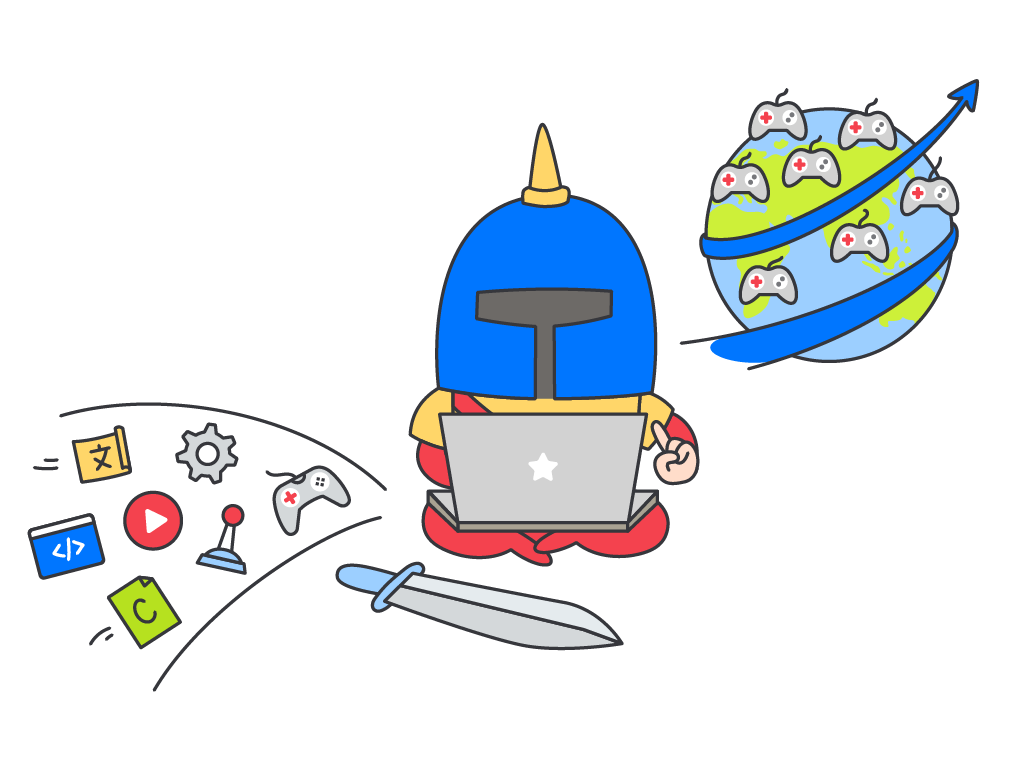
Localization Testing
Localization testing services help you round up semantic errors, contextual mismatches, font display problems, and other string-related issues before the final build reaches players.
Although functional testing can detect several issues of this type, the key word here is ‘several.’ A comprehensive check of the localization is a job for localization testers (not functional testers), and the competence of these specialists varies. To learn more, read this story focused specifically on localization testing.
In broad strokes, localization testing is more than a perfectionist’s best friend. It’s a process that allows you to see how the localized product will be perceived by the target audience and make quick fixes before your support service goes nuts with complaints received. The good news is that localization testing shouldn’t cost you an arm and a leg, especially if you are prepared for it.
A quick case study: When doing localization testing for Vizor Interactive’s game Mahjong, our testers got cheat codes and in-game coins to quickly reach the precise level that required testing. When localization testing was needed only to check the UI translation, Vizor provided us with a gameplay video, and it helped reduce testing time significantly.
The Power of Sound and Vision: Elevating Game Localization to the Highest Level
Voice Localization: A Better User Experience
When it comes to voice narration, you need to consider the proper tone of voice for specific strings, taking into account the context in which these phrases are heard. For example, a word as simple as ‘Yes’ or an exclamation as simple as ‘Oh!’ can sound very different depending on the situation. To help a voiceover artist catch the right tone, you can provide the localization team with context references, e.g. gameplay video capture with this phrase being read out loud in the original language, and a short textual explanation, e.g. ‘The character is frightened.’
A quick case study: When ordering English voice-overs for over 20 characters for the game Camelot: Wrath of the Green Knight, the developer provided us with a description and image of every character. They also explained the context of each phrase so that we were able to provide voice artists with comprehensive guidance on mood and subtext for every line. In addition, video references served as a duration clue for specific sets of phrases.
Fortunately, by the time you want to localize your game, you most likely have the voiceover part recorded in the original language already. And you can come to the video game voice over agency with these audio files ready to go; the original recordings can serve as references, if you are happy with them, of course.
When your characters are animals, there’s one more thing to consider: animal sounds differ from language to language. For example, in the German language frogs say ‘kwaak,’ while in Chinese it’s ‘guo guo,’ and in Japanese it’s ‘kero kero.’ So when recording voice-overs for animals, check whether these sounds are subject to localization, as well.
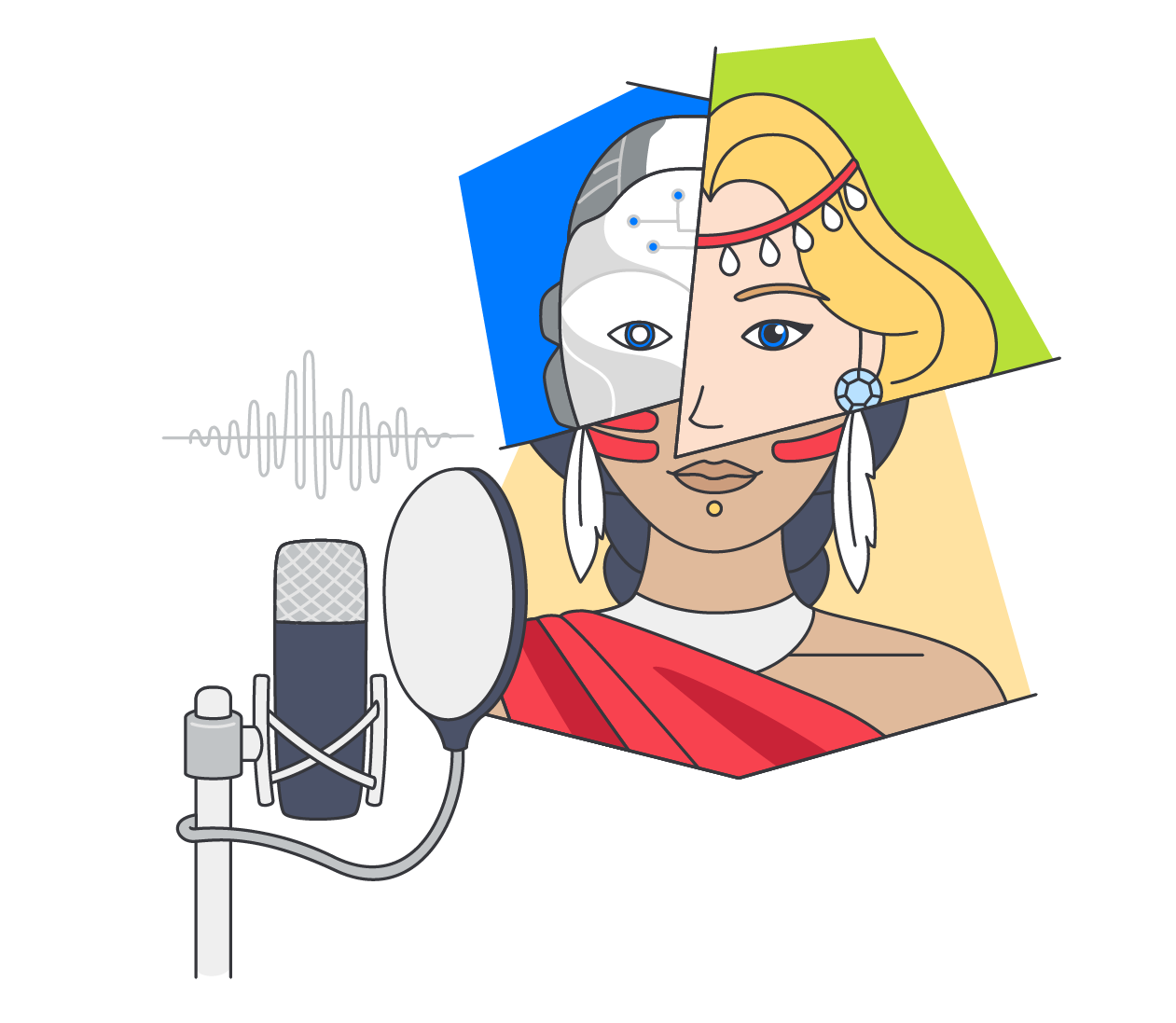
Don’t forget that if an audio line is attached to a video sequence, you might need to ensure the localized voiceover does not exceed the length of the original. And if you wish to apply special effects to the audio, e.g. make a character sound robotic or as if they're speaking through a bullhorn, remember to allocate the time and budget for a post-processing stage.
Images and Animation: A Costly Challenge
The simplest scenario for a developer is when no changes in the game's visual content are needed to successfully adapt it for a foreign market. But this is when cultural differences come into play. The tip of the iceberg is the attitude to nudity. There can be drastic variations in this attitude between the developer's native market and the target market for which the game is being localized, depending how lucky you are.
Characters’ gestures, behavior, and even some items players will deal with might also be affected by the rules and regulations, customs and traditions of the target market. Picture, for instance, a simulator game where players cook dishes requested by NPCs. If the menu contains, let’s say, steaks, think of what the meat should look like. Should it be just a conventional ‘piece of meat’ — or maybe you’d draw cute little pigs or cows to emphasize that it’s a pork steak or beef steak, respectively? As you might have guessed, the first option is more localization-friendly, while the second option may add one more item to your to-do list if you are aiming at Arabic-speaking or Indian markets.
What about the gestures characters make? For example, how do their hands move when they want to beckon a player? What is the position of their fingers when they want to express agreement? A no-brainer in one culture can mean something different in other cultures. Being simply misunderstood is the lesser evil here.
To avoid costly changes, think of—or at least be aware of—pitfalls like these, and allow time for adjustments, if necessary, even before preparing strings for localization. To find the most common pain points, such as numbers that a Japanese player would consider unlucky, or the symbolism of specific colors in Feng Shui, you can conduct an in-depth search on your own. For a deeper analysis, or if you simply want to save time, consider showing your game to a representative of the target country and asking for their opinion at least on the following issues:
- Whether your game touches on issues that are considered sensitive or debatable in the target culture
- Whether your game’s plot is generally understandable without knowing the background of your native culture
- Whether the character’s clothes, gestures, and behavior are appropriate and understood the way you intended
- Whether the visual palette of your game is pleasing to the eye of a target market representative
- Whether the game contains any misfortune indicators, such as the unlucky numbers already mentioned, that you didn’t intend
A review like this may instantly highlight any grave issues that could significantly affect the localization cost or even make you reconsider localizing the game for a specific market.
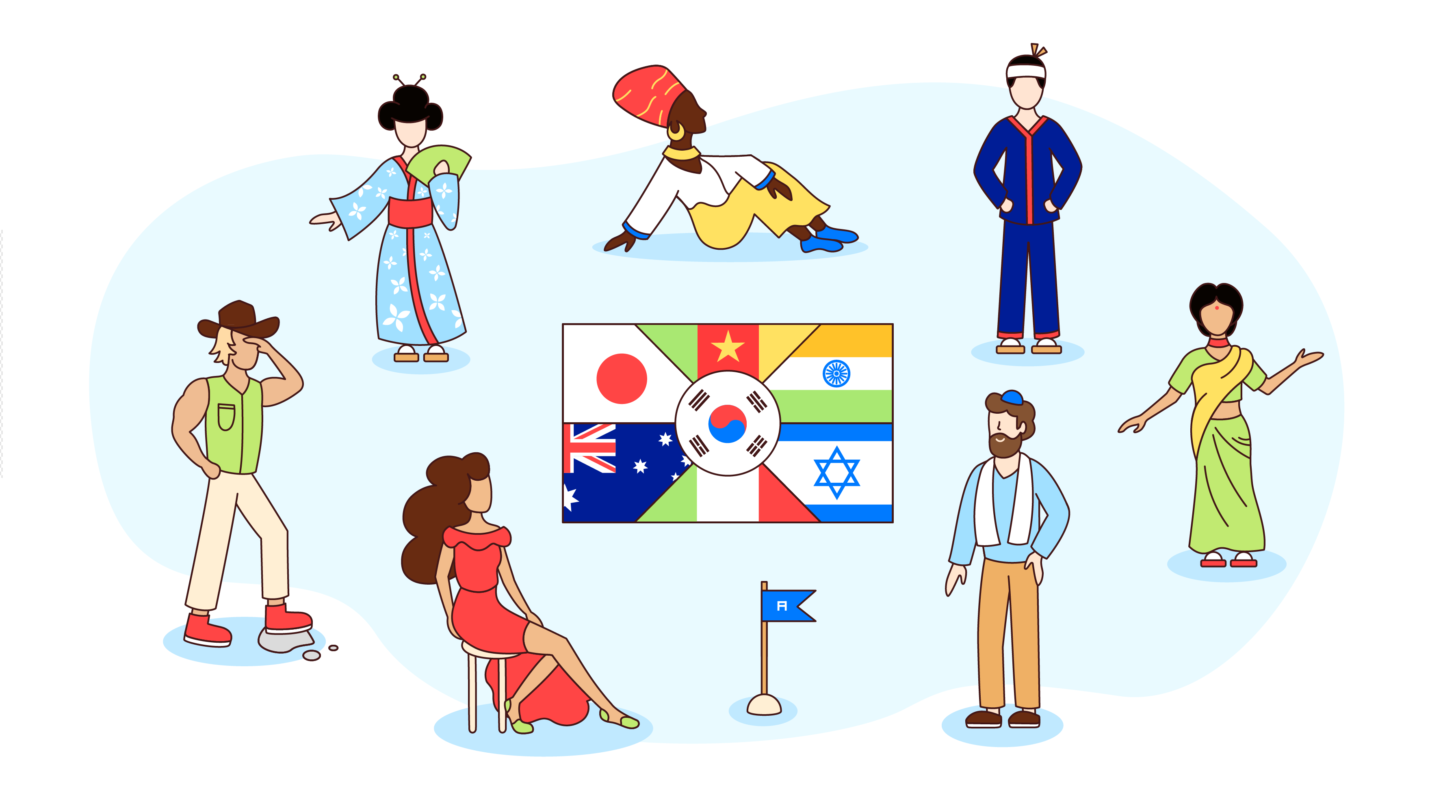
Changes like these are obviously outside the scope of linguistic localization. Let’s face the bitter truth: it will be your team who will have to adjust the game visuals and animation, characters’ behavior, narrative design, game mechanics, and so on. Help from the outside can come in the form of consultations, and although this may look like a drop in the ocean, it can still be a big help.
If you need consultations, there's no need to network urgently to strike up a friendship with a target culture representative. Your localization team can arrange this consultation for you, taking your intentions and concerns into account and carefully conveying them to a native-speaking game translation professional who’s familiar with local customs and context. This way, you can get a valuable reality check and save your team and yourself from wasting hundreds of working hours, not to mention money.
Demystifying Top 5 Questions about Game Translation Agencies
1. Won’t game localization service “from the outside” ruin the spirit?
This is an understandable concern. The more love and heartfelt feeling you and your team put into the game, the more difficult it is to entrust it to external people.
The key advantage of a professional game localization studio is that they work with native speakers of the target languages. These folks obviously know better than anyone how to transmit the implied sense in the most natural, concise, and eloquent way. Not every international fan is capable of this: even if they know the target language, it remains foreign to them.
Don’t be surprised, however, if translators become your game’s first international fans. Game localization is an absorbing process, and the translators that select this job are usually gamers at heart.
Another advantage is their vast experience localizing other games, even in the same genre. An already-existing understanding of a specific niche, be it business management, car repair, fishing, the everyday life of medieval knights, or whatever else, is a huge advantage, to say the least.
This combination of advantages can give you exactly what you need: a terminologically flawless and stylistically exquisite localization in the shortest possible time frame.
2. Can I transfer a game to a localization service provider in a partly localized condition?
There might be different reasons for you to ask this question. You might have started localization in-house, but the passion faded. Or you tried a localization service company, and it didn’t fully meet your expectations.
In any case, the answer is yes: you can switch to another game localization agency without sacrificing quality or ruining translation consistency. For example, the game Vlad & Niki: 12 Locks that we’ve been translating into ten languages, including Hindi and Vietnamese, came to us in partly localized form. Some content required editing, and the project glossary was incomplete. We finetuned and cleaned up the existing translations and added missing elements to the glossary (character names, quest names, etc.), and we keep developing the glossary with each update.
So, if you feel like changing horses mid-stream, be brave enough to consider it.
3. Does game localization take more time if there are characters?
This is also a reasonable concern. On the one hand, it seems logical to assume that to perfectly transfer a character into another culture, a translator may ask for many clarifications and ponder all the clever wording a bit longer.
On the other hand, assets such as a localization brief and lockit reduce questions to a minimum, especially if they contain references, such as screenshots and actual gameplay videos. But these assets are highly desirable even for localizing a game that doesn’t feature characters.
This means that although the developer’s input at the beginning of a localization project can help a lot, in general, the presence of characters in a game doesn’t affect the localization turnover time too drastically.
4. Does character localization influence a game’s localization cost?
In terms of price increases, the answer is no, unless we're talking about multimedia localization or localization testing. If we put these services aside, the game localization cost itself is calculated based on the size of a written text in characters or words. It’s the volume of text that affects the price, regardless of whether the lines are attached to a character. Urgent translation tasks, however, might cost you more than usual.
In terms of a price deduction for written text localization, sometimes you can save a bit because of repetitive lines. A Translation Memory feature—the majority of localization platforms have it— helps track similar strings, and the policy of your localization service provider can help you spend less on localization. Some game localization companies offer big discounts for translating repetitive strings.
What can increase the cost is multimedia content localization, such as character voiceover or in-game videos. The multimedia localization cost is usually calculated individually, with specific requirements taken into account: complete video localization with all the bells and whistles or simple, budget-friendly subtitling; dozens of voiceover artists involved or only a few.
Also, the presence of dialogue can indirectly influence the cost of localization testing services, as the testers must examine every line closely to check whether it suits the context.
5. How should I prepare for my game’s localization?
We can help you out with this! Here’s our free guide on how to prepare a game for localization; please go and use it!
Credits
Company info: The story was written at Alconost, where over 600 native-speaking professionals localize games into over 100 languages. The company also helps integrate localization into the game development process and conducts game localization testing. Alconost’s game localization services are backed up by 18 years of experience in the translation industry with a focus on the IT market. Learn more: https://alconost.com/.

Author info: The story was written by Natalia Shuhman, an information & communication specialist with a master’s degree in sociology. At Alconost, Natalia is a copywriter and editor; her mission is to raise the IT community’s awareness of the importance of high-quality localization and video production to ensure a product’s success. Natalia’s favorite games are Heroes of Might and Magic III, TES V: Skyrim, and Godville.
